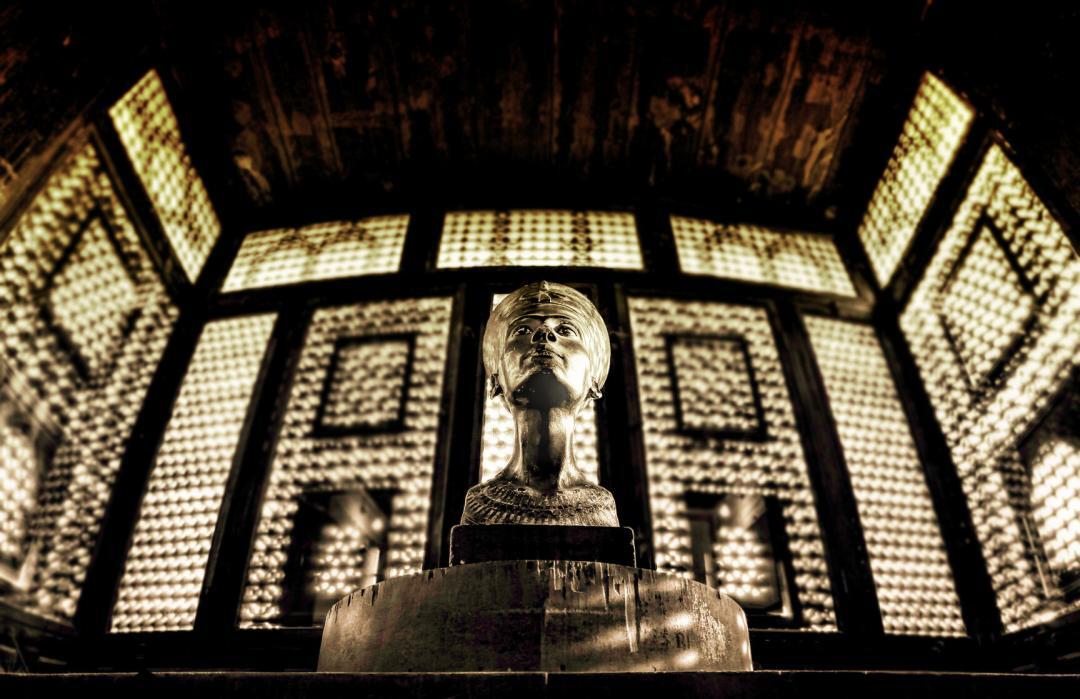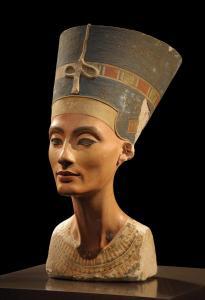
Is the Nefertiti Bust Real or Fake?
Nefertiti the Great Royal Wife of Pharaoh Akhenaten. Her bust is iconic, her image, along with King Tut’s golden mask, is what most people visualize when they think of ancient Egypt. The bust is one of the most copied works of ancient Egypt. She was born in 1370 BC and her name, Egyptian Nfr.t-jy.tj, can be translated as “The Beautiful Woman has Come”. One look at her bust and you can say that name absolutely fits.
A German archaeological team led by German archaeologist Ludwig Borchardt discovered the bust on December 6, 1912, in Thutmose’s workshop. It was found in what had been the workshop of the sculptor Thutmose, along with other unfinished busts of Nefertiti.
It has been kept in Germany since its discovery. Over the decades Germany has rejected repeated requests from Egypt for her return. It has also been the subject of an intense argument between Egypt and Germany over Egyptian demands for its repatriation, which began in 1924 once the bust was first displayed to the public. Egyptian inspectors were not shown the actual bust before they let it out of the country.
The bust of Nefertiti is believed to have been crafted about 1345 BC by the sculptor Thutmose. The bust does not have any inscriptions but can be certainly identified as Nefertiti by the characteristic crown, which she wears in other surviving (and clearly labeled) depictions.
Her elegant and chiseled features held proud and high on a swanlike neck, she has been smiling serenely for 3,400 years. At least that has long been the popular and scientific belief that draws half a million tourists to see her in Berlin every year. But now doubt has been thrown on the authenticity of the painted limestone and plaster bust of the 18th dynasty Egyptian queen Nefertiti by author Henri Steirlin, who claims she is a fake.
His book, Le Buste de Nefertiti – une Imposture de l’Egyptologie? (The Bust of Nefertiti – an Egyptology Fraud?), came out in 2009 and everyone was quick to discredit him. However, Henri Steirlin wasn’t the only one who thought it was a fake. Berlin author and historian Erdogan Ercivan wrote his own book, called Missing Link in Archaeology, where he too claimed that the bust was a modern fake.
The German authorities4 dismissed the claims as a publicity stunt since radiological tests, detailed computer tomography and material analysis have proved its authenticity. The pigments used on the bust have been matched to those used by ancient Egyptian artisans.
Stierlin has said the stunning work that will later this year be the showpiece of the city’s reborn Neues Museum was created by an artist commissioned by Ludwig Borchardt, the German archaeologist credited with digging Nefertiti out of the sands of the ancient settlement of Amarna, 90 miles south of Cairo, in 1912.
But in 2014 the Smithsonian Channel shocked the world with their own part of the story. They spoke to a convicted forger, who says he’s sure it’s a fake.
“The damage is selective, and that’s a dead ringer for a fake,” forger Shaun Greenhalgh says.
Here are some of the arguments from one of the commentators, against the authenticity of the Nefertiti bust.
- *Borchardt (the guy who first has the bust) had a reputation as a forger and a reputation for buying fakes and making fakes and trying to pass them off as real. Additionally, we know for a fact other parts in support of the bust are certainly fake, we know because…
- -It is inconsistent with the Egyptian style of its time, you cannot find another bust like in Ancient Egypt, additionally, it doesn’t appear in ANY record, Export record, Military record nor Import record. In other words, it first appears in Germany NOT Egypt, according to the record. This makes it impossible to authenticate as Egyptians.
- -Nefertiti is depicted as someone with a clearly extreme form of prognathism where their low jaw is forward and forehead slants backward. This is not depicted in the bust.
- -It was common that the men(merchants selling knock-offs) scratch off old paint, crush it and apply it with a binding agent.”
- -Borchardt made forgeries himself when he was a student. He imitated a cuneiform tablet and wrote logarithms onto it. A scholar fell for the practical joke.
- -The bust doesn’t fall into any known category we find anywhere in Egypt. It seems to be painted in a modern-day flesh color of a caucasian person maybe with a tan. Now being painted tan isn’t disqualifying in and of itself. It is all the other factors, mysterious history, NOT looking like Nefertiti (in ALL other depictions of her), and appearing in a paint color we NEVER SEEN BEFORE OR AFTER.
- -The bust is made of stone but has a plaster on it. This is again, unheard of.
- -The bust also has multiple layers, again this is uncommon. Usually, they’d sculpt down a single piece of stone. They wouldn’t plaster it.
What do you think? Is the Nefertiti bust real or a fake?
Share this:
- Click to share on Facebook (Opens in new window) Facebook
- Click to share on Pinterest (Opens in new window) Pinterest
- Click to share on X (Opens in new window) X
- Click to share on Telegram (Opens in new window) Telegram
- Click to share on Pocket (Opens in new window) Pocket
- Click to share on WhatsApp (Opens in new window) WhatsApp
- Click to share on Reddit (Opens in new window) Reddit
- Click to share on LinkedIn (Opens in new window) LinkedIn
- Click to share on Tumblr (Opens in new window) Tumblr
- Click to print (Opens in new window) Print


